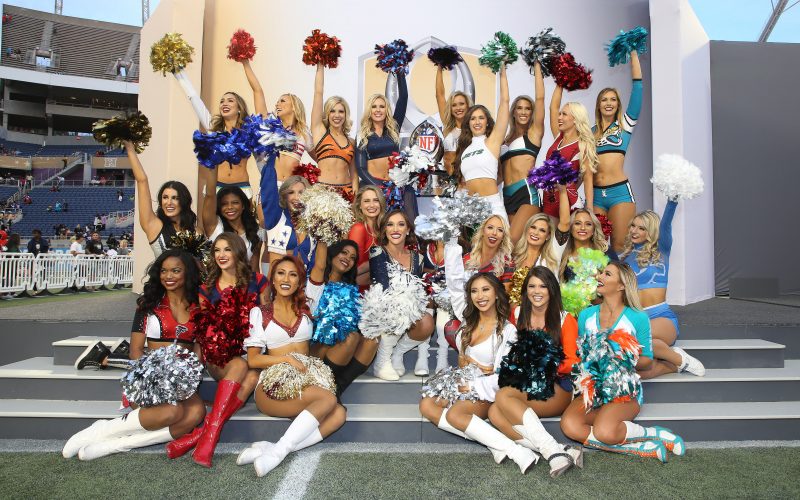NFL cheerleaders put in hours of practice, have thousands of fans and serve as ambassadors for the teams — and get paid next to nothing. Chabeli Carrazana is economy and childcare reporter for The 19th News. She joins guest host Courtney Collins to discuss why high-profile cheerleaders aren’t making a living wage, the lawsuits that are fighting for a pay increase, and why misogyny in sports is so hard to eradicate. Her article is “NFL cheerleaders have been fighting for better pay for 10 years. They’re still being sidelined.”
Is it time to put a pep in NFL cheerleader pay?
By Madelyn Walton, Think Intern
NFL cheerleaders put in the work. They compete in intense tryouts, change their appearances, and dedicate hours to practices to debut two-minute performances on game day. And most of these women navigate their passion for cheer while multitasking another full-time job and families.
With the recent release of a docuseries exploring the secrets of the high-profile cheerleading world, conversations have surfaced about the price these women pay to be on the field and the low wages they are compensated with. The Netflix series depicts the rigorous process of making the team as well as the physical and mental strain these athletes face. These women are doing what they love, but at what cost?
Chabeli Carrazana, the economy and childcare reporter for The 19th News, joined Courtney Collins to discuss why professional cheerleaders continue to fight for better pay and what the legal outcome has been. Her article is “NFL Cheerleaders have been fighting for better pay for 10 years. They’re still being sidelined.”
Chabeli notes one element that contributes to the cheerleader’s lack of pay is that they are not recognized as NFL employees. NFL teams work with third-party contractors and hire the women through them.
“And that’s pretty critical because that means contractors in the U.S. do not need to adhere to federal and state minimum wage laws,” says Carrazana. “They can pay a flat rate.”
The women also pay out of pocket to keep up their appearances. They are told to keep up certain hairstyles, physical attributes, and weight.
“These are the things that you have to maintain in order to stay on this team, in order to be able to go out on the field and cheer,” says Carrazana. “And if any of these fell off, there could be fines. There could be infractions. You could be pulled. You could be essentially benched.”
Carrazana was stunned by the number of rules and regulations these women face that spectators aren’t aware of.
In 2014, a former Oakland Raiderette filed a class action lawsuit against her team. She rallied other cheerleaders and successfully settled. She fought for herself, her family, and her teammates despite the consequences.
“It really kind of became the model for the many lawsuits that we saw after that,” says Carrazana.
There’s an argument that NFL cheerleaders shouldn’t complain about unfair wages because it is a privilege to be part of a high-profile team.
“And that philosophy is still really powerful and has made it very difficult for there to be kind of these bigger movements to try to push the NFL or the teams into changing that structure,” says Carrazana.
The hope is that these women can earn the pay that they deserve and do what they love without compromising their livelihoods.
“We see them on the sidelines, we might even marvel at the talent in what they’re doing, but they are not thought of very much,” says Carrazana. “They are oftentimes invisible, at least in these conversations around value and pay or even may be taken for granted.”
There is so much demanded of these women. They go out on game day and perform and, as evidenced by ongoing pay disputes, they are silenced when they hit the sidelines.
“The reality is ten years is not a very long time. And we’re only beginning to have these conversations,” says Carrazana. “There’s still a very, very long way to go.”





